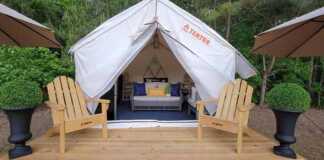Oregon in the Pacific Northwest has some of the most beautiful natural scenery in the USA. From the iconic Oregon coast to jaw-dropping waterfalls and mossy forests, Oregon is certainly a destination for nature lovers.
Surprisingly, though, Oregon only has one national park: the famous Crater Lake National Park. But there are plenty of national monuments, national historic trails and national historic sites. There’s no shortage of nationally designated spaces, from a massive lake to a Lewis and Clark trail to national volcanic land. Let’s explore the national parks in Oregon.
Contents
- National Parks in Oregon
- 20 Oregon National Parks
- 1- California National Historic Trail
- 2- Crater Lake National Park
- 3- Fort Vancouver National Historic Site
- 4- Ice Age Floods National Geologic Trail
- 5- John Day Fossil Beds National Monument
- 6- Lewis and Clark National Historic Trail
- 7- Lewis and Clark National Historic Park
- 8- Newberry National Volcanic Monument
- 9- Nez Perce National Historic Park
- 10- Oregon National Historic Trail
- 11- Oregon Caves National Monument And Preserve
- 20 Oregon National Parks
National Parks in Oregon
20 Oregon National Parks
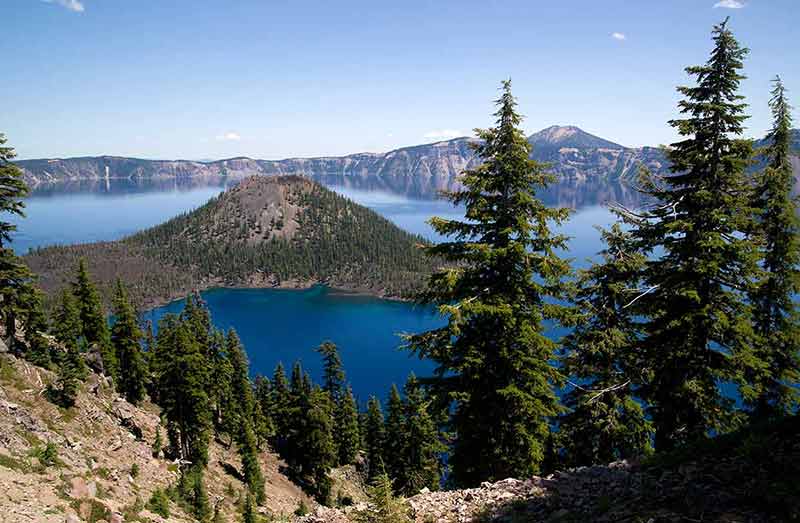
1- California National Historic Trail
The misleading name of the California National Historic Trail might make you think that this trail has nothing to do with Oregon. But, it actually spans across 10 states, with Oregon included.
The trail was created in the 1840s, and 1850’s when emigrants travelled west to the supposed land of ‘milk and honey’ to find better opportunities.
Not all travellers ended up in California, though- several travelled up to Oregon, settling in the western part of the state.
The California National Historic Trail is more than 5,000 miles (8,047 km) long, with the section from the Missouri River to California covering over 2,000 miles (3,219 km).
There are several historical sites, churches, trail segments created by wagon ruts and museums along the trail.
You can check out the trail and the Douglas County Museum of History and Natural History in Oregon.
This museum features Oregon’s largest natural history collection of thousands of artefacts.
Douglas County Museum is at 123 Museum Dr, Roseburg, OR 97471.
2- Crater Lake National Park

Crater Lake National Park, one of the state’s most popular natural attractions, is in the Cascade Mountain Range atop a dormant volcano.
Crater Lake, the jewel of Crater Lake National Park, is one of the most pristine lakes in the world.
The lake is the USA’s deepest and the 10th deepest in the world, measuring 1,949 ft (594 m) deep.
Interestingly, no rivers flow in or out of the lake, preserving its deep blue colour and water clarity.
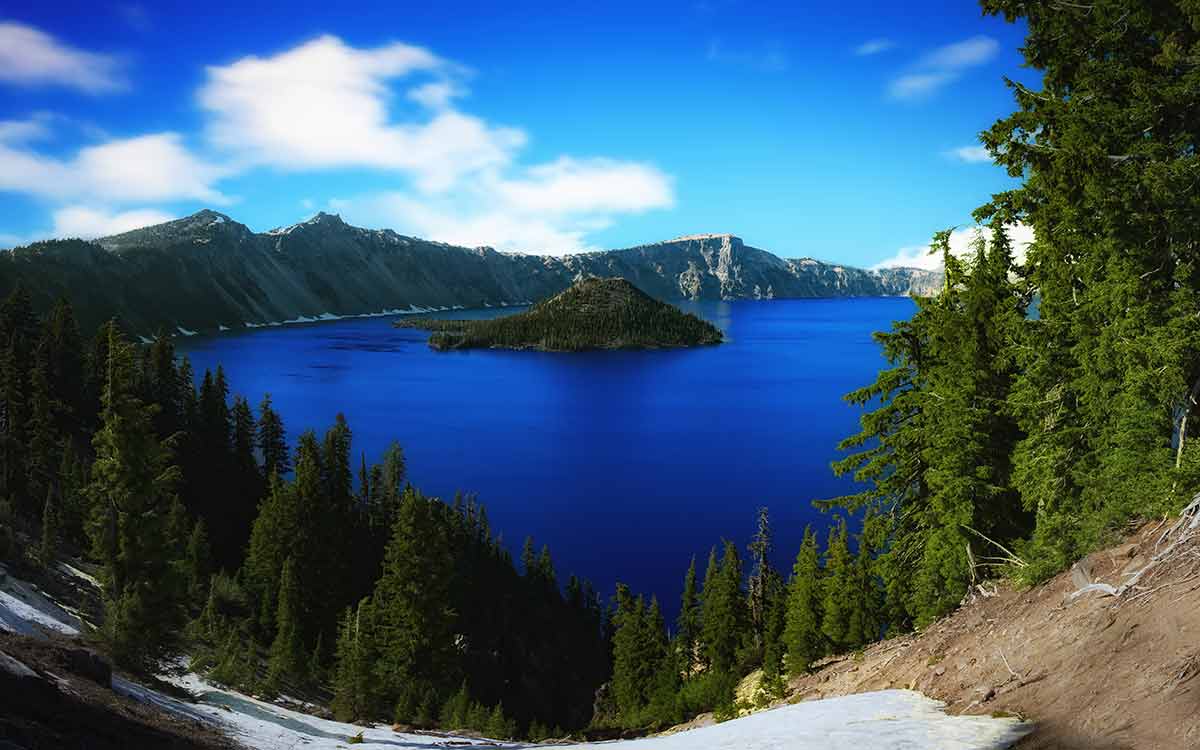
There are exciting things to do at this Oregon national park, whether you’re visiting during the winter, summer or the seasons in between.
The park is covered with glittering snow from November through May, providing visitors with many wintertime activities.
You can go snowshoeing with a guide or, if you’re feeling adventurous, on your own. And cross-country skiing through the subalpine forest and meadows that line the lake.
There aren’t any designated sledding areas, but you will find several opportunities to go sledding or tubing around the park.
The open meadow south of Crater Lake Lodge is a popular sledding destination.
The snow starts to melt in May and June, but not completely. Be prepared for snow to block access to some parts of the park. But it’s absolutely still worth the visit.
During these months, you can view the lake from Rim Village, snowshoe (until late May), hike or bike on the Rim Drive, watch the 22-minute long park film, and enjoy the winter’s remaining snow.
One of the fun summer activities in Crater Lake National Park is hiking and there are 23 named trails, ranging from 0.5 miles (0.8 km) to 9.8 miles (15.8 km).
The hiking trails offer diverse views, from the sparkling Crater Lake to pumice fields, from vibrant wildflowers to lush pine forests.
Plus, you can tour Wizard Island, a volcanic cinder cone off the shores of the lake. Once on the island, hike to the top to see the lake from a new angle.
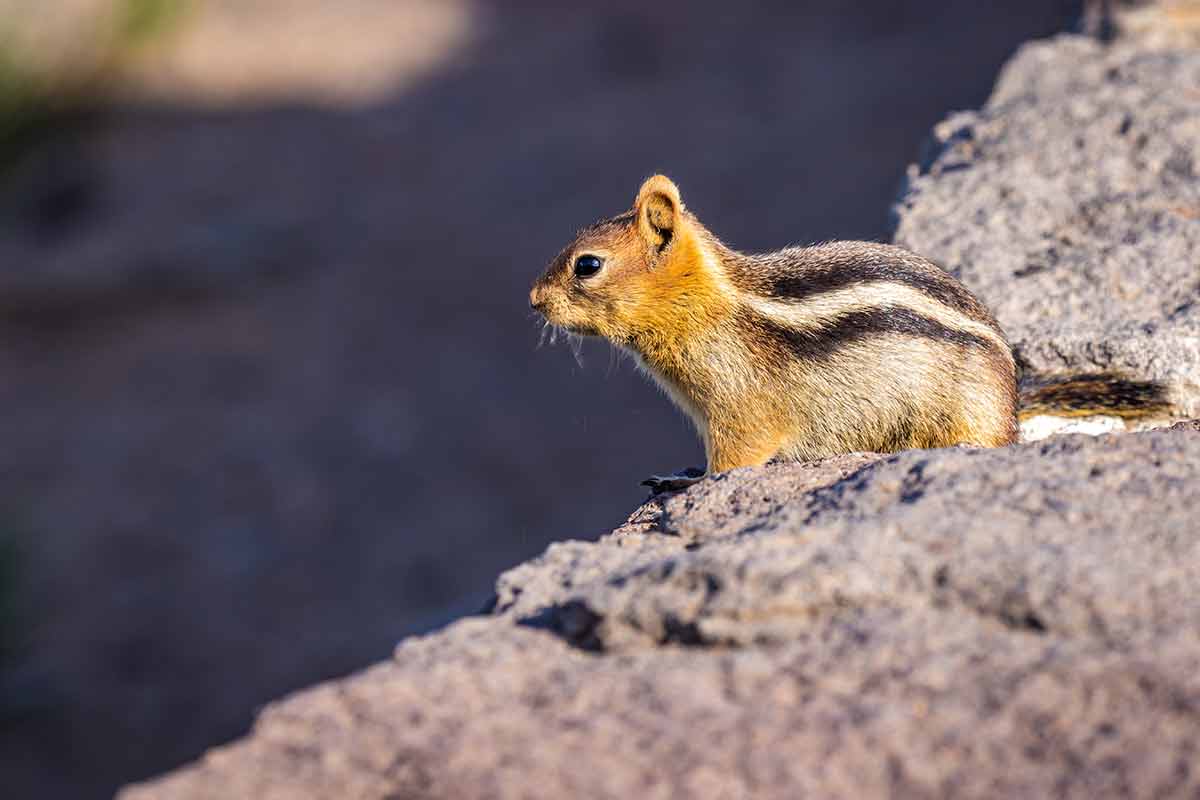
Other activities during the summer months include fishing, backcountry camping and wildflower viewing.
The park is home to 250 species of birds (plus other fascinating creatures such as marmots), making it ideal for wildlife viewing and birding.
In the autumn, you can continue to observe the park’s wildlife and witness impressive bird migrations.
View the lake, hike (weather permitting) and discover multiple species of trees at the Ponderosa Picnic Area.
There are two lodging options within Crater Lake National Park: The Cabins at Mazama Village and the Crater Lake Lodge.
Depending on the season and weather, you might like to try the campgrounds in and around the park.
3- Fort Vancouver National Historic Site
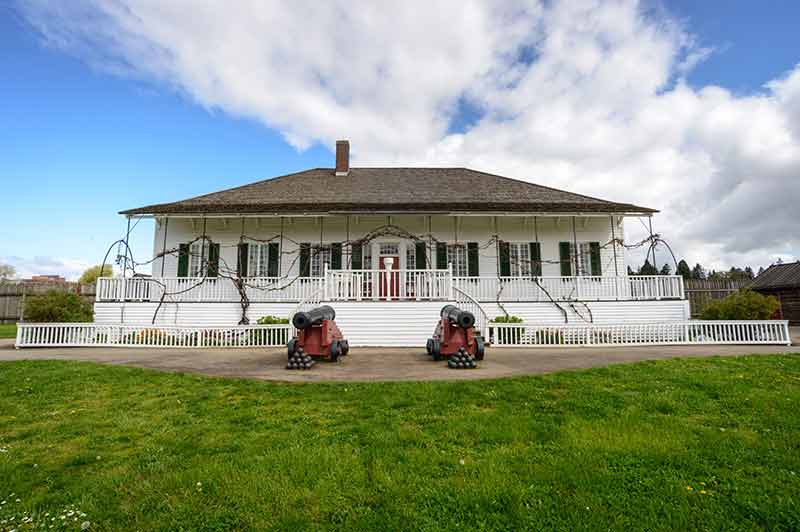
Fort Vancouver is a national historic site on the north bank of the Columbia River covering land in both Washington and Oregon, with units in Vancouver and Oregon City.
The national historic site covers 207 acres (84 ha), including barracks and an air museum.
In the Oregon part of Fort Vancouver, the McLoughlin House site overlooks the Willamette River and holds a rich history.
The site consists of the McLoughlin House and the Barclay House, which were both built in the 1840s.
Today, these buildings function as educational museums where visitors can learn about the history of the period in which it was built.
Several activities are offered, including tours, talks and Victorian handcraft demonstrations.
McLoughlin House is at 713 Center St, Oregon City, OR 97045. The Barclay House is next door at 719 Center St, Oregon City, OR 97045.
Also read:
4- Ice Age Floods National Geologic Trail
Thousands of years ago, near the end of the last Ice Age, an ice dam in northern Idaho burst, releasing excessive flood water across the Pacific Northwest.
The Ice Age Floods National Geologic Trail comprises a network of paths connecting educational facilities and natural sites that interpret this significant event.
The trail covers 16,000 square miles (41,440 square metres) that span across Idaho, Montana, Washington and Oregon.
In Oregon specifically, you can check out sites along the Willamette River and the Wallula Gap.
The specific Oregon sites along the trail consist of Hat Rock State Park, the Columbia Gorge Discovery Center and Museum, Multnomah Falls and the Crown Point National Natural Landmark.
There’s also the Tualatin Ice Age Walking Trail, the Tualatin Public Library, the Erratic Rock State Natural Site, and the Willamette Floodplain National Natural Landmark.
At these sites, you can hike, read about the history of the Ice Age flood, observe how the land has changed since the flood, and check out skeletons, sculptures and engravings.
5- John Day Fossil Beds National Monument
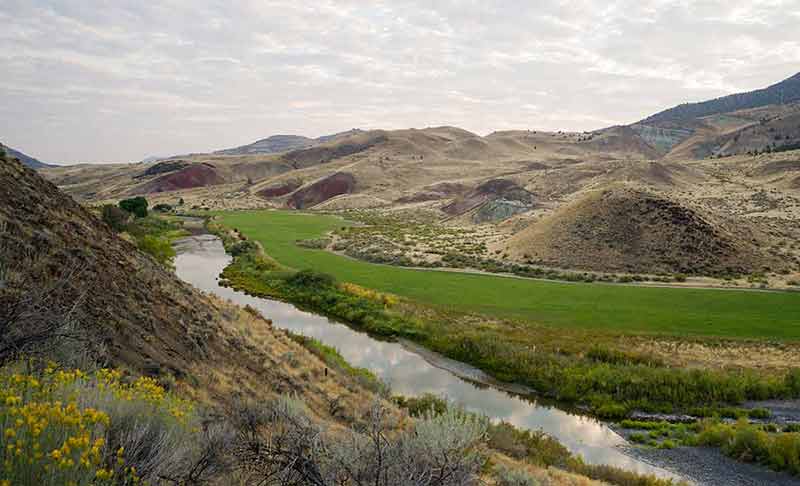
In east-central Oregon, John Day Fossil Beds National Monument tells many untold stories of ancient Oregon.
The vibrant rock formations hold a history that spans roughly 40 million years, including evidence of ecosystems, climate change, and the evolution of animals and plants.
There’s plenty to do outdoors at the national monument, including hiking, rafting on the John Day River, biking and fishing.
The national monument consists of three specific units: Sheep Rock, Painted Hills, and Clarno.
All units have hiking trails and picnic areas, and the Sheep Rock unit also is home to the Historic James Cant Ranch and the Thomas Condon Paleontology Center.
At the Historic James Cant Ranch, open only during the summer, you can check out museum exhibits that entail life on the ranch in the early 20th century.
The Thomas Condon Paleontology Center, however, is perhaps more characteristic of a national monument dedicated to fossil beds.
The centre features fossil displays of more than 500 fossils from the area, in addition to unique murals and a paleontology laboratory.
The Thomas Condon Paleontology Center is at 32651 HWY 19 Kimberly, OR 97848.
6- Lewis and Clark National Historic Trail
The Lewis and Clark National Historic Trail is an extensive 4,900-mile (7,886-km) trail that wanders through 16 states.
Tracing the 1803 to 1806 Lewis and Clark expedition, the trail spans from Pennsylvania to the Pacific Ocean.
Along the lengthy trail in Oregon, there are 42 places to visit, including museums, state parks, hiking trails, waterfalls and wildlife refuges.
At these sites, you can hike, read about the history of the expedition, check out unique flora and more.
Specific points of interest include Mt. Jefferson, the Sandy River Delta, Tansy Point, Ecola State Park, and Fort Clatsop.
7- Lewis and Clark National Historic Park
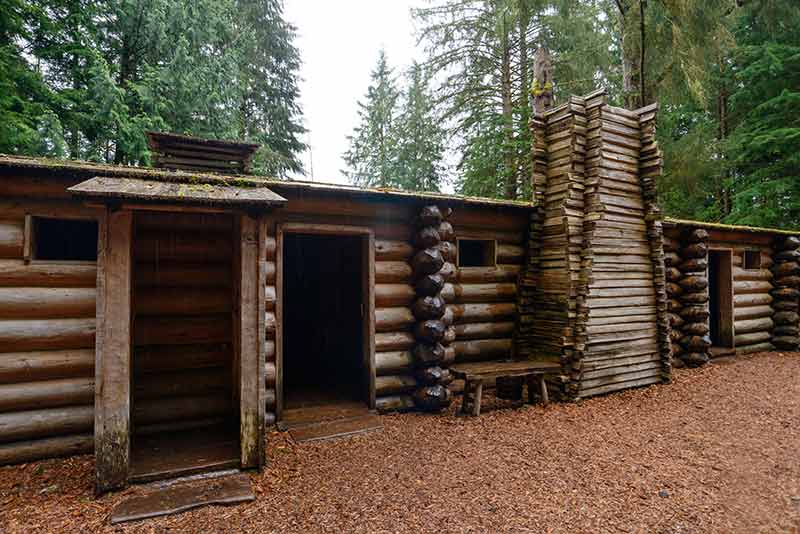
The Lewis and Clark National Historic Park, not to be confused with the Lewis and Clark National Historic Trail, encompasses sites along the Pacific Coast and the Columbia River.
However, several sites that make up this national historic park also belong to the national trail.
For example, Ecola State Park is part of both the national trail and the national historic park.
Located just an hour west of Portland, this state park offers sightseeing and recreational activities along 9 miles (14.5 km) of the Oregon Coast shoreline.
Another main point of interest is the Fort Clatsop Visitor Center, where you can take a step back into the past at a replica of the fort.
The Lewis and Clark Expedition stayed at this encampment during the winter between 1805 and 1806, giving the site a rich history in the exploration of the United States.
There are plenty of educational displays, films and demonstrations inside the Fort Clatsop replica.
Hike a trail or check out the historic canoe landing.
The Fort Clatsop Visitor Center is at 92345 Fort Clatsop Rd, Astoria, OR 97103. Ecola State Park is in Clatsop County, just three miles (4.8 km) north of Cannon Beach.
8- Newberry National Volcanic Monument
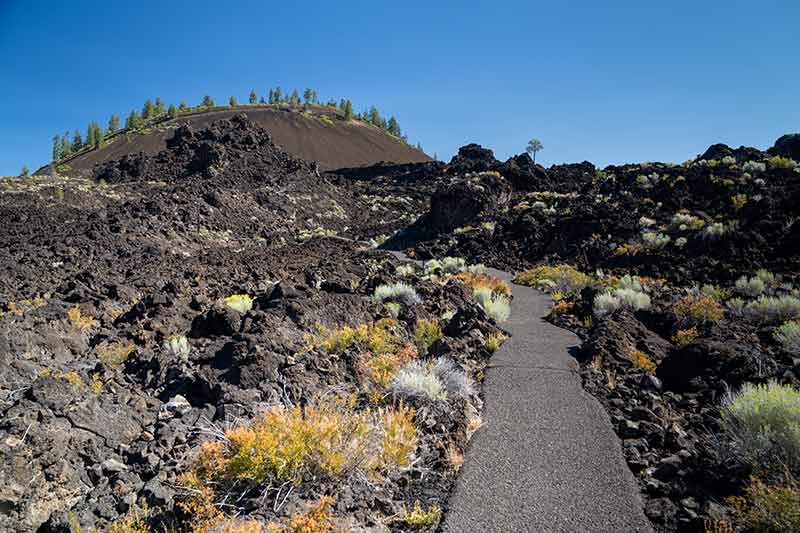
The Newberry National Volcanic Monument, which was created within the Deschutes National Forest in 1990, provides a wonderful opportunity to view central Oregon’s lava fields.
The national monument covers more than 54,000 acres (21,853 ha) of land full of unique volcanic features such as lava flows, lakes and other geologic features.
Wildlife habitats include forests, wetlands and rocky habitats.
Here, you can view the fascinating wildlife, from bald eagles to raccoons to bats to bears.
You can also cycle, hike, camp, fish, ride horses and picnic. There are trails for both day hiking and backpacking.
Popular ones include Cinder Hill Trailhead, Lava Butte Trail, and Newberry Crater Trail, all providing opportunities to check out the monument’s interesting geological features.
Many activities vary depending on the season. Popular summertime activities include boating and swimming at the lakes, while wintertime activities include snowmobiling and cross-country skiing.
The monument is closest to the cities of Bend, Sunriver, and La Pine.
9- Nez Perce National Historic Park
The Nez Perce, or Nimiipuu, people have lived in the inland Pacific Northwest for thousands of years.
These natives suffered from several tragedies, including land theft and deadly epidemics.
Yet, the tribe has demonstrated resilience throughout the years and has adapted in many ways.
The Nez Perce National Historic Park consists of 38 places that are important to Nez Perce culture and history.
Many of the sites, such as the main visitor centre, Big Hole National Battlefield, and the Heart of the Monster, are located in the states of Idaho, Washington and Montana. But, there are still things to do in Oregon.
The Old Chief Joseph Gravesite is an Oregon site that holds much cultural and historical significance.
The cemetery, which covers 5.1 acres (2.06 ha) of land, is a site sacred to the Nez Perce tribe dedicated to Tıwi·teqıs, otherwise known as Old Chief Joseph, one of the most famous Nez Perce chiefs to ever live.
The native leader refused to sell his homeland to American settlers and uttered dying words urging his son to defend this land.
You can explore the site at the gravesite, visit the adjacent Iwetemlaykin State Heritage Site, or visit the nearby Wallowa County Museum.
All of these sites hold valuable access to knowledge and history of the Nez Perce.
The Old Chief Joseph Gravesite is located just 1 mile (1.6 km) south of Joseph, on the western side of Oregon Highway 82.
The Iwetemlaykin State Heritage Site is along Oregon Route 351, just south of Joseph. The Wallowa County Museum is at 110 S Main St, Joseph, OR 97846.
10- Oregon National Historic Trail
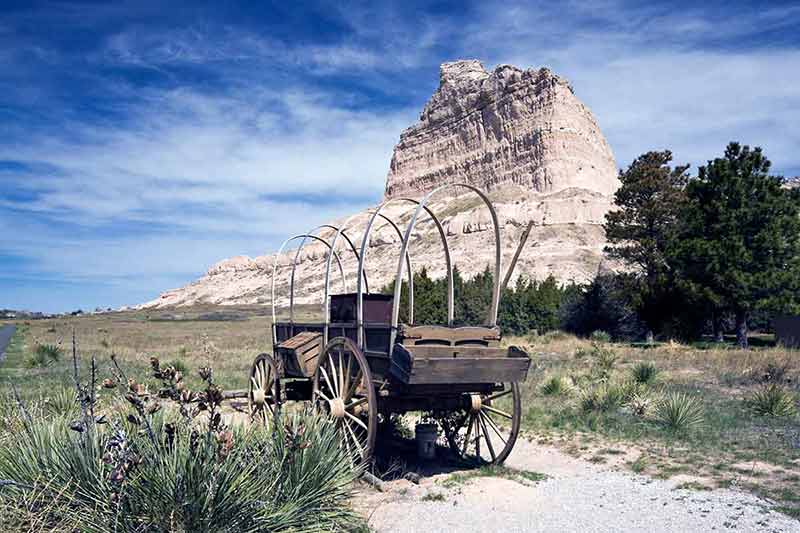
The Oregon Trail represents some of the most famous history of the United States.
Early American settlers trekked more than 2,000 miles (3,219 km) for promises of a new and fruitful life out West back in the 19th century.
Carrying up their belongings and packing them into wagons, the ruts left behind represent the struggle and the triumphs of Americans who took the trail.
Luckily you can visit sites along the trail to learn about the United States settler history.
The sites in Oregon are:
- Columbia Gorge Discovery Center
- Umatilla River Lower Crossing
- Tamástslikt Cultural Institute
- Flagstaff Hill (National Historic Oregon Trail Interpretive Center)
- Wasco County Historical Museum
- End of the Oregon Trail Interpretive Center
- McLoughlin House
These places are located throughout the state of Oregon, so you can visit important Oregon Trail sites wherever you are in the state.
You can explore interactive and informative exhibits at the sites, see Oregon Trail ruts, and read about the trail’s past.
11- Oregon Caves National Monument And Preserve
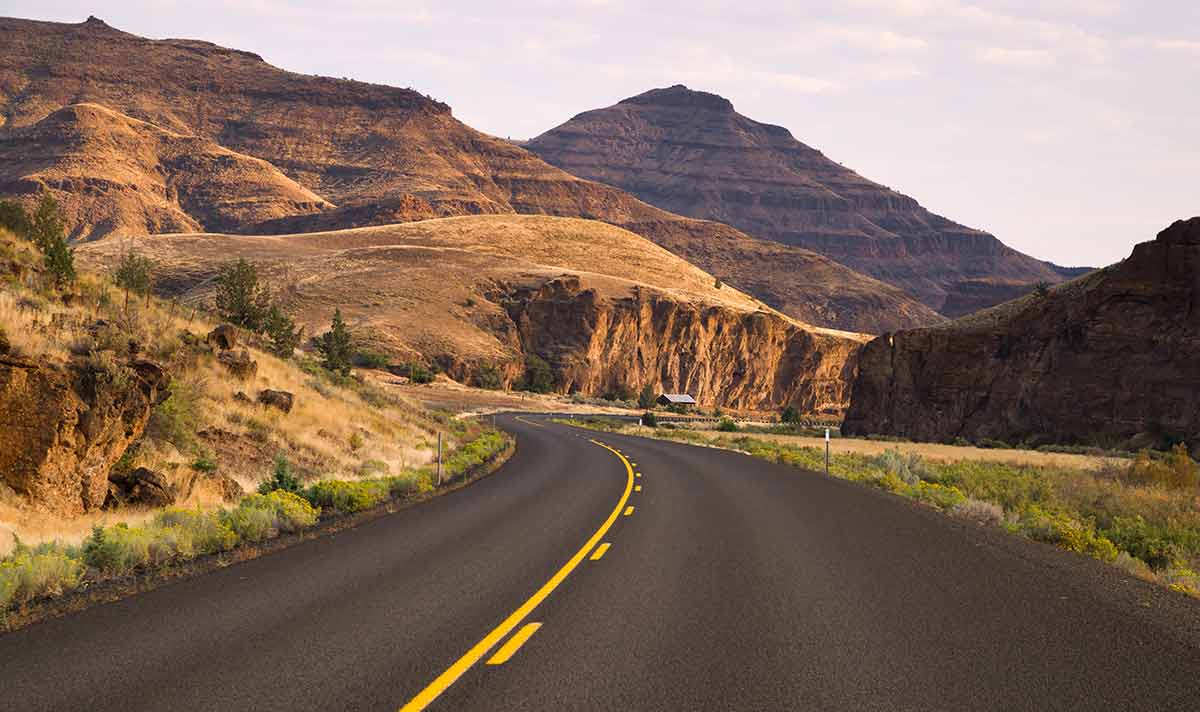
The last national site in Oregon is the Oregon Caves National Monument and Preserve.
Here, you can check out the so-called “Marble Halls of Oregon”, created by acidic water that carved into the rock over aeons.
The park is quite large, covering 4,554-acre (1,843 ha) of land and twisting caves.
Here, you can camp, check out a bookstore, and explore the Oregon Caves.
There are three main guided cave tours: the Discovery Cave Tour, the Candlelight Cave Tour, and the Kids and Family Day Tour.
Each tour has unique characteristics, so make sure you sign up for the one that’s best for you.
You can also go off-trail caving, which requires crawling and squeezing through tight spaces in the most fascinating depths of the caves.
The Candlelight Cave tour, for example, entails exploring the cave as its earliest explorers once did: with the light of only a flickering flame.
On the tour, you’ll carry a candle lantern that will take you back in time as you explore the cave. However, the Candlelight Cave tour, the Kids and Family Day Tour, and off-trail cave exploring are always offered, so make sure to check out the tours in advance.
Oregon Caves National Monument is in the Siskiyou Mountains in southwestern Oregon, 20 miles (32 km) east of Cave Junction on Oregon Route 46.
If you love exploring national parks, you might like to read:
- Wyoming National Parks Guide
- Nevada National Parks Guide
- Michigan National Parks Guide
- 5 Maine National Parks
- New Hampshire National Parks Guide
- 25 National Parks in Canada
- 17 National Parks in Argentina
- Tasmania National Parks
- 20 National Parks in Mexico
- 18 New Mexico National Parks
- 18 National Parks in Massachusetts
- 17 Colorado National Parks
- 4 Indiana National Parks
- 5 Nebraska National Parks
- 30 Virginia National Parks
- 9 New Jersey National Parks
- 8 National Parks in Arkansas
- 8 Alaska National Parks
- 13 Tennessee National Parks
- 6 National Parks in Louisiana
- 5 Illinois National Parks
- 7 National Parks in Oklahoma
- 7 National Parks in South Dakota
- 12 Alabama National Parks
- 5 North Dakota National Parks
- 8 National Parks in West Virginia
- 20 National Parks in Arizona
- 11 National Parks In Florida
- 8 Hawaii National Parks
- 6 National Parks In Idaho
- Texas National Parks Guide
- 9 California National Parks
- 11 National Parks In Georgia
- 7 National Parks In Missouri
- 5 National Parks in Minnesota
- 7 National Parks In Kentucky
- 8 National Parks In Montana
- 15 National Parks In Washington State
- 8 South Carolina National Parks
- 12 North Carolina National Parks
- 4 Wisconsin National Parks
- 20 National Parks In India
- 11 Oregon National Parks
- 5 Connecticut National Parks
- 27 National Parks In New York State
- 4 Iowa National Parks
- Yosemite National Park
- Zion National Park
- 21 National Parks in Pennsylvania
- 9 National Parks in Mississippi
- 5 National Parks in Rhode Island
- 9 National Parks in Taiwan
- 20 East Coast National Parks
- Guide To Winter in Yellowstone National Park
Plan Your Trip

Rent A Car – Find the best car rental rates at Discover Cars. They compare car hire companies to provide you with the best deal right now.

Find A Hotel – If you’re curious about this article and are looking for somewhere to stay, take a look at these amazing hotels.
